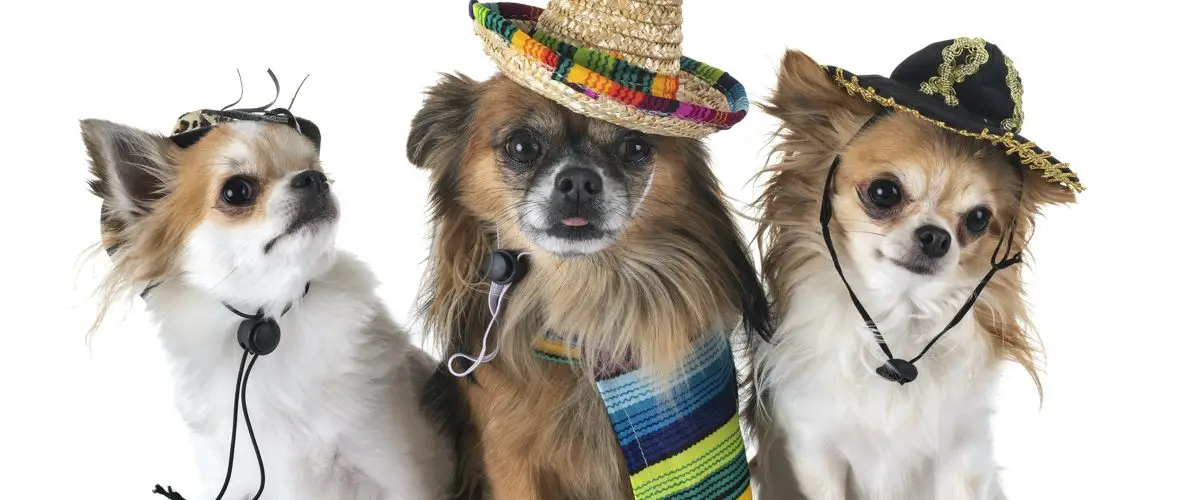Like other slang terms in Spanish, there are many ways to name everything, depending on where you are. The same goes for man’s best friend, which, depending on its breed and the country you are in, has different names. Here I’ll show you the 21 most popular ways of saying dog in Spanish.
Perro – Dog
Perro is the main Spanish word for dog. According to the RAE, perro derives from the Greek word fuego pyr (same as pyre in English). This is because the character of these cute little animals is dry and fiery, and in Ancient Greece they used to name things by how they looked or acted.
Perruno – Doggy
This term encompasses everything that is proper to dogs, and yet we can also refer to dogs in this somewhat formal way. It is very popular throughout the Spanish-speaking world and is used mostly in veterinary and zoological environments.
Cachorro – Puppy
Although this veterinary term, it refers to young dogs between 8 to 12 months of age and, depending on the breed, it can also be an affectionate way of saying dog in Spanish to refer to a dog that is especially tender or very playful. It should also be noted that, in the scientific field, any mammalian offspring is also called cachorro.
Can – Dog
Can comes from the Latin canis, which literally means dog. Hence it has come to our times in the abbreviated form can to refer to them. Can is also a word used to describe the birds from the Canary Islands and got their name during the Roman colonization. Also, another word canalla is used to describe badly behaving stray dogs.
Canino – Canine
Derived from the previous term, but also refers to everything related to dogs, including objects and implements for dogs. Canino also refers to the sharp teeth we humans have in our mouth cavity because of their similarity to those of our “canine friends”.
Canalla – Scoundrels
This term means “pack of dogs” and, besides being the name given to stray dogs, it is also a really offensive phrase in Spanish. It all depends on the tone of voice in which it is said and to whom it refers.
Firulais – Free of Lice
In the middle of the last century, agricultural workers returning from the United States boasted that they had bought their dogs in that country with a certificate of “free of fleas and ticks” or “free of lice” and pronounced it Fri yu Lais or Friyulais. This phenomenon occurred in several Latin American countries, which many natives found funny and began to pronounce as Firulais. Currently, this is how stray dogs are known throughout Latin America, and such is their popularity, that in the Latin Spanish dubbing of the TV series Rugrats, the dog Spike is called Firulais.
Tribilín – Goofy in English
This funny way of calling dogs comes from the popular Disney character Goofy, which in the European Spanish dubbing is precise Tribilín. It is used in Spain and some areas of Latin America to refer to a clumsy, funny and very nice dog, just like this character.
Pluto – Mickey’s pet dog
Pluto is Mickey Mouse’s dog, the funny little mouse created by Walt Disney. These cartoons have had a great impact on Latin American pop culture and a clear example is that many of us refer to a dog with the name of his pet dog.
Beethoven – A dog named after the composer
At the time when the movie Beethoven came out, with a Saint Bernard as the main character, many people started to refer to dogs by this name. And although that fad is in the past, in most Latin American countries, we still refer to a Saint Bernard dog as a Beethoven.
Pec – Dog in the Mayan language
In some areas of Mexico, such as Yucatán, dogs are called pec. This term to say dog in Spanish comes from the Mayan language and is very popular in expressions such as macachí, pec, which means “shut up dog”.
Pichicho – Dog in Mapuche language
In Chile, Pichicho means stray dog in the Mapuche language, which is the name given to dogs that roam the streets abandoned, regardless of breed or sex. In other Latin American countries, this same word refers to something that is few or scarce in quantity.
Guau-Guau – Dog barking onomatopoeia
Human beings, since ancient times, have communicated through sounds when formal languages did not exist. Hence, to name them, they imitated the sounds of each one, like meeh-meeh is a goat, miau-miau (meow-meow) is a cat and “guau-guau” (woof-woof) is a dog. This onomatopoeia is used throughout the Spanish-speaking world and is part of children’s vocabulary because before children learn to speak Spanish, they usually refer to dogs in this way.
Chucho – Onomatopoeia of dog in Nahuatl
Like the previous example, chucho is the onomatopoeia that comes from chuchu, which was used by Mexican Indians to imitate the dog in Nahuatl. This term is used not only in Mexico but also in countries such as Peru, Ecuador and Bolivia.
Lata – Can
This is a formal way of saying dog in Spanish, often used in the news and written texts in most Latin American countries. Like sabueso, it is a widespread term that is used regardless of the breed or sex of the dog we are referring to.
Sabueso – Hound
As mentioned above, this term is used in headlines, newscasts, academic texts and other writings to mean dog in Spanish. Its origin goes back to some years ago, when bloodhounds were the usual dogs of detectives and policemen, thanks to their great sense of smell. As the media promoted this term, it became widespread and now remains a familiar way of referring to any type of dog regardless of its breed or sex.
Peludo/Peludito – Hairy
Peludo and peludito are affectionate ways of calling dogs, especially if they are long-haired breeds. This happens not only because of their fur but also because of their similarity to stuffed animals, so terms like felpudo are also common to refer to any domestic mammal other than dogs, such as cats.
Lomito – Little back
With the arrival of social networks, Spanish vocabulary has expanded and lomito is an affectionate and tender term used to refer to dogs and became popular on the web. It refers to canines as being “beings to caress” – their backs being the main target of this pampering.
Cacri – Creole Street
This term of Venezuelan origin comes from the abbreviation of callejero criollo. It is used to refer to stray dogs but it has also been used to refer to mixed dogs.
Vulpeca – Vulgar stray dog
It is another Venezuelan term that derives from an abbreviation. In this case from vulgar perro callejero and is used exclusively to refer to street dogs, which mainly inhabit garbage dumps.
Catumpi – Stray throwing away the trash can
Again, this Venezuelan term derives from another abbreviation: Callejero tumba pipote. Catumpi, like vulpeca, is used to refer to street dogs that inhabit garbage dumps. A pipote is a garbage container, and these determined dogs knock them down so they can rummage through them to see if there is food inside. That’s why they are called this way, regardless of their sex.
Final thoughts
As we have already seen in this article, there are many interesting ways to call our doggy friends in Spanish. Regardless of their breed, age and sex, these cute little animals fill us with affection every day and we return it by calling them in these affectionate ways in our language.










Add comment